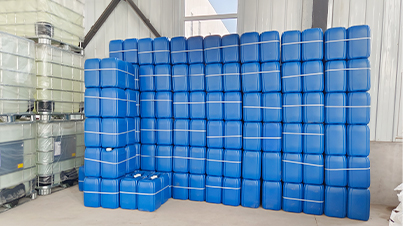Exploring the Uses and Benefits of Diethylenetriaminepentaacetic Acid in Various Applications
Understanding Diethylenetriamine Penta (DTPA) An Overview of Its Applications and Benefits
Diethylenetriamine penta (DTPA) is a versatile compound that belongs to the family of chelating agents, renowned for its ability to form stable, water-soluble complexes with various metal ions. With its chemical formula C14H23N5O10 and a structure that allows bonding to five different sites, DTPA plays a crucial role across multiple industries, including pharmaceuticals, agriculture, and environmental remediation.
Chemical Properties and Structure
DTPA is derived from diethylenetriamine, a compound that features three amine groups which contribute to its chelating properties. The penta in its name indicates the presence of five carboxylate groups capable of binding with metal ions such as calcium, lead, and heavy metals. This characteristic makes DTPA particularly valuable for applications requiring the removal of toxic elements from various matrices.
Applications in Medicine
In the medical field, DTPA is primarily used as a radiopharmaceutical for diagnostic imaging. It acts as a chelating agent that helps in blocking radiotoxicity by binding to radioactive isotopes. For instance, DTPA is employed in the treatment of heavy metal poisoning, particularly for lead. The chelation process enables the body to excrete these toxic metals more easily, reducing their harmful effects.
Moreover, DTPA is used in nuclear medicine for renal function studies. By chelating technetium-99m, a widely used radioactive tracer in imaging, DTPA provides insights into kidney function and structure, facilitating the diagnosis of various renal disorders. This demonstrates the compound's significance in enhancing diagnostic accuracy and therapeutic effectiveness.
Environmental Applications
diethylenetriamine penta

DTPA has garnered attention for its environmental applications, particularly in the field of soil remediation. Contaminated sites often contain heavy metals that pose severe risks to human health and the ecosystem. Utilizing DTPA in soil washing processes effectively mobilizes these metals, allowing for their recovery and removal from contaminated soils. The efficiency of DTPA in forming stable complexes with heavy metals facilitates the development of cleaner soil and water, thereby fostering a healthier environment.
Agricultural Benefits
In agriculture, DTPA is utilized as a micronutrient chelator to improve the availability of essential nutrients to plants. Iron, for instance, is often found in forms that are not readily absorbable by roots. DTPA enhances the solubility of iron, allowing plants to utilize it effectively, thus promoting better growth and crop yields. Additionally, DTPA-treated fertilizers can mitigate nutrient deficiencies in soils, ensuring that crops receive optimal nourishment throughout their growth cycles.
Safety and Regulatory Aspects
In light of its diverse applications, it is crucial to understand the safety and regulatory status of DTPA. While DTPA is considered safe for use in medical and agricultural products, proper handling and adherence to regulatory guidelines are paramount to prevent potential adverse effects. Regulatory bodies like the U.S. Environmental Protection Agency (EPA) and the Food and Drug Administration (FDA) oversee its applications, ensuring that it meets safety standards without compromising environmental health or human safety.
Conclusion
Diethylenetriamine penta (DTPA) stands out as a multifaceted compound that has demonstrated considerable utility in various sectors. From its role in enhancing medical diagnostics and treatments to its capability in environmental remediation and agricultural applications, DTPA's chelating properties make it an invaluable resource. As research progresses and the need for safe, effective methods to combat metal toxicity and improve nutrient availability in agriculture becomes more prominent, the importance of DTPA is likely to increase, solidifying its status as a crucial component in modern science and technology.
-
Pbtc Scale InhibitorPBTC: A Scale Protector for Industrial Water TreatmentNewsAug.05,2025
-
Organic Phosphonate: An Efficient Defender in the Field of Scale InhibitionNewsAug.05,2025
-
Hydrolyzed Polymaleic Anhydride: Green Pioneer in Scale Inhibition FieldNewsAug.05,2025
-
PAPEMP Polyamino Polyether Methylene Phosphonic Acid For SaleNewsAug.05,2025
-
Flocculant Water Treatment: A Pioneer in Purification in the Field of Water TreatmentNewsAug.05,2025
-
Benzyl Isothiazolinone: An Efficient and Broad-Spectrum Antibacterial Protective GuardNewsAug.05,2025





